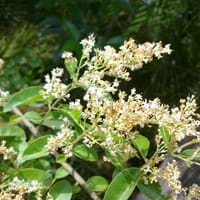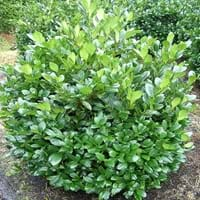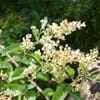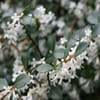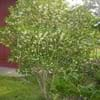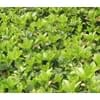Life Span
Perennial
Perennial
Type
Broadleaf Evergreen
Broadleaf Evergreen
Origin
China
Eastern Europe, Western Asia
Types
Ligustrum sinense concavum, Ligustrum sinense coryanum, Ligustrum sinense dissimile
Castlewellan, Otto Luyken, Schipkaensis
Habitat
Not Available
Lowland evergreen rainforest
USDA Hardiness Zone
8-10
6-9
AHS Heat Zone
Not Available
Not Available
Habit
Upright/Erect
Spreading
Flower Color Modifier
Bicolor
Bicolor
Fruit Color
Dark Blue, Black
Black
Leaf Color in Spring
Dark Green
Dark Green
Leaf Color in Summer
Dark Green
Dark Green
Leaf Color in Fall
Dark Green
Dark Green
Leaf Color in Winter
Dark Green
Dark Green
Leaf Shape
Ovate
broad, flat
Plant Season
Spring, Summer, Fall, Winter
Spring, Summer, Fall, Winter
Sunlight
Full Sun, Partial Sun, Partial shade
Full Sun, Partial Sun, Partial shade, Full Shade
Growth Rate
Very Fast
Medium
Type of Soil
Loam, Sand
Clay, Loam
The pH of Soil
Acidic, Neutral, Alkaline
Acidic, Neutral
Soil Drainage
Average
Well drained
Tolerances
Pollution, Drought, Salt
Drought, Salt
Where to Plant?
Ground
Ground
How to Plant?
Cuttings
Softwood cuttings
Plant Maintenance
Medium
Medium
Watering Requirements
Keep the ground moist but not water-logged
Keep the Soil well drained, Provide sufficient water to saturate the root zone, Use Mulches to help prevent water loss during hot and windy weather
In Summer
Lots of watering
Lots of watering
In Spring
Moderate
Moderate
In Winter
Average Water
Average Water
Soil pH
Acidic, Neutral, Alkaline
Acidic, Neutral
Soil Type
Loam, Sand
Clay, Loam
Soil Drainage Capacity
Average
Well drained
Sun Exposure
Full Sun, Partial Sun, Partial shade
Full Sun, Partial Sun, Partial shade, Full Shade
Pruning
Prune in spring
Remove damaged leaves, Remove dead branches, Remove dead leaves
Fertilizers
Fertilize just before the growing season begins
All-Purpose Liquid Fertilizer
Pests and Diseases
Not Available
Red blotch
Plant Tolerance
Drought, Pollution, Salt
Drought
Flower Petal Number
Single
Single
Foliage Texture
Medium
Medium
Foliage Sheen
Glossy
Glossy
Attracts
Birds
Bees, Birds, Insects
Allergy
Not Available
Not Available
Aesthetic Uses
Showy Purposes, small hedge
Informal Hedge
Beauty Benefits
Not Available
Not Available
Environmental Uses
Air purification
Air purification
Medicinal Uses
Not Available
Eye Infection, Nausia, Vomiting
Part of Plant Used
Whole plant
extracted oil
Other Uses
Used as Ornamental plant
Dried heads are used in floristry
Used As Indoor Plant
No
No
Used As Outdoor Plant
Yes
Yes
Garden Design
Feature Plant, Hedges, Screening, Wind Break, Street Trees
Foundation, Hedges, Mixed Border
Botanical Name
Ligustrum sinense
PRUNUS laurocerasus 'Otto Luyken'
Common Name
Chinese privet
cherry laurel, common laurel
In Hindi
Chinese privet
English laurel
In German
Chinesischer Liguster
Lorbeerkirsche
In French
Chinese privet
Laurier-cerise
In Spanish
aligustrina, ligustrina, ligustrín, o aligustre
Prunus laurocerasus
In Greek
Κινέζοι privet
Prunus laurocerasus
In Portuguese
Ligustrina
Prunus laurocerasus
In Polish
Chiński ligustr
Laurowiśnia wschodnia
In Latin
Chinese privet
Prunus padus
Phylum
Magnoliophyta
Tracheophyta
Class
Magnoliopsida
Magnoliopsida
Order
Scrophulariales
Rosales
Clade
Angiosperms, Asterids, Eudicots
Angiosperms, Eudicots, Rosids
Tribe
Oleeae
Not Available
Subfamily
Not Available
Not Available
Properties of Chinese Privet and English Laurel
Wondering what are the properties of Chinese Privet and English Laurel? We provide you with everything About Chinese Privet and English Laurel. Chinese Privet doesn't have thorns and English Laurel doesn't have thorns. Also Chinese Privet does not have fragrant flowers. Chinese Privet has allergic reactions like Not Available and English Laurel has allergic reactions like Not Available. Compare all the properties and characteristics of these two plants. Find out which of these plant can be used as indoor plant. If you are interested to decorate your house and garden, find out aesthetic uses, compare them and select the plant which will beautify your surrounding. Along with beautification, try comparing medicinal and edible uses of Chinese Privet and English Laurel and you can choose the plant having best and most benefits.
Season and Care of Chinese Privet and English Laurel
Season and care of Chinese Privet and English Laurel is important to know. While considering everything about Chinese Privet and English Laurel Care, growing season is an essential factor. Chinese Privet season is Spring, Summer, Fall and Winter and English Laurel season is Spring, Summer, Fall and Winter. The type of soil for Chinese Privet is Loam, Sand and for English Laurel is Clay, Loam while the PH of soil for Chinese Privet is Acidic, Neutral, Alkaline and for English Laurel is Acidic, Neutral.
Chinese Privet and English Laurel Physical Information
Chinese Privet and English Laurel physical information is very important for comparison. Chinese Privet height is 460.00 cm and width 300.00 cm whereas English Laurel height is 90.00 cm and width 180.00 cm. The color specification of Chinese Privet and English Laurel are as follows:
Chinese Privet flower color: White
Chinese Privet leaf color: Dark Green
English Laurel flower color: White
- English Laurel leaf color: Dark Green
Care of Chinese Privet and English Laurel
Care of Chinese Privet and English Laurel include pruning, fertilizers, watering etc. Chinese Privet pruning is done Prune in spring and English Laurel pruning is done Remove damaged leaves, Remove dead branches and Remove dead leaves. In summer Chinese Privet needs Lots of watering and in winter, it needs Average Water. Whereas, in summer English Laurel needs Lots of watering and in winter, it needs Average Water.
